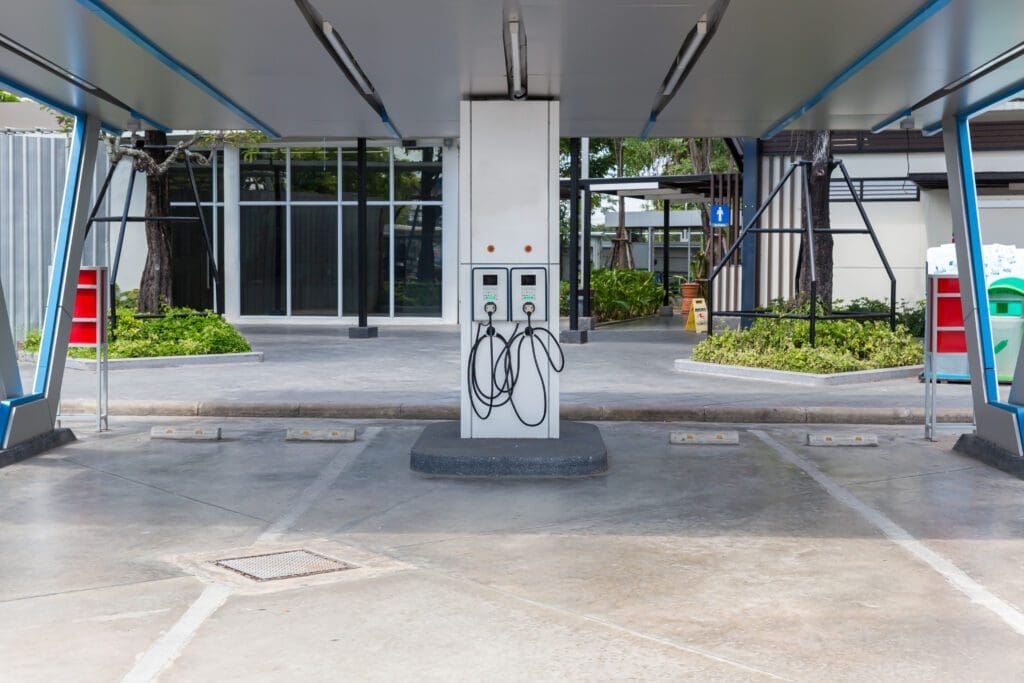If you build it, they will come. That’s what the Federal Highway Administration (FHWA) hopes: if alternative fuels are readily available on connected highways and interstates, more people will use “clean” personal and commercial vehicles. The FHWA literally said so in its Winter 2018 publication, Refueling America: “For stakeholders waiting for alternative fuel vehicles to evolve from automotive novelties to ubiquitous commercial and passenger vehicles, a common refrain echoes out over the miles and miles of highways without adequate fueling stations: If you build it, they will come.”
What (and Where) Exactly) Are the Corridors?
As part of the Fixing America’s Surface Transportation (FAST) Act, the FHWA has been “shaping the future of highway infrastructure by designating corridors across the country that provide charging and fueling stations for vehicles powered by electricity, hydrogen, propane, and natural gas.” The FHWA is developing these alternative fuel corridors by vetting submissions from state and local officials across the country who verify their area’s existing facilities and identify future needs for alternative fueling infrastructure. The administration recently updated the second round of Alternative Fuel Corridor Designations, which now include:
- 58 nominations
- 84 interstate corridors including Hawaii (segments or entire lengths)
- 44 states (plus the District of Columbia) designated as corridor-ready or corridor-pending for one or more alternative fuel types
Designations are split into two categories: “corridor-ready” (also known as “signage-ready),” and “corridor-pending” (or “signage-pending”). The first term means that the route has enough facilities to warrant signage that alerts drivers to alternative fueling stations, and the second means that facilities are planned but not yet operational. Stations must be public and within five miles of a highway.
Each alternative fuel type is considered when designating a corridor (i.e., a corridor may be a “designated CNG corridor”). The following criteria are used to determine when a corridor is “ready”:
- EV charging: EV charging facilities at 50-mile intervals
- Hydrogen: Hydrogen fueling facilities at 100-mile intervals
- Propane: Propane fueling facilities at 150-mile intervals
- Natural gas: Compressed natural gas (CNG) facilities at 150-mile intervals; Liquefied natural gas (LNG) facilities at 200-mile intervals
Nearly half of the states have signage-ready corridors. More than 60 U.S. highways and interstates include at least a segment that is electric vehicle-ready, and almost 50 that are CNG-ready. As of now, less than 20 are LNG-ready and only 10 are hydrogen-ready, with most hydrogen stations in California and the East Coast. The FWHA’s website provides maps of each type of alternative fuel corridor along with its designation (ready or pending), and Land Line Magazine has an online map and routing tool that also includes stations that provide ethanol and biodiesel.
Do We Really Need Alternative Fuel Corridors Now?
There’s a direct connection between fuel availability and attitudes about alternative fuel vehicles. There’s also a bit of a “chicken and egg” dilemma: Build the facilities now or wait until more alternative fuel vehicles are on the road? The FHWA decided on the former course, betting that the availability of alternative energy routes will fuel sales of “cleaner” vehicles. “Although alternative fuel corridors are still a new concept, the marketplace has experienced rapid growth—with no signs of stopping,” the FHWA wrote in Refueling America. “The corridors themselves are a tool to add more fueling stations around the country, strengthening a growing industry, and ensuring that this sector of the transportation market will have a strong future.”
The rising price of fossil fuels should also promote the use of alternative fuel vehicles, as should stricter Environmental Protection Agency and state regulations. State regs can be even stricter than federal ones, like the California regulations regarding diesel trucks and buses: Newer heavier trucks and buses had to meet PM filter requirements as of January 1, 2012; lighter and older heavier trucks had to be replaced by January 1, 2015; and by January 1, 2023, nearly all trucks and buses will need to have 2010 model year engines or the equivalent. In addition, the state recently announced that beginning in 2020 it would block DMV registration for California-domiciled carriers whose vehicles don’t meet the California Air Resources Board’s Truck and Bus Regulation.
How to Fund the Transition to Alternative-Fuel Vehicles?
But California is also putting its money where its mouth is, with incentives, grants and credit programs to help defray the cost of upgrading or replacing older vehicles. For example, the state recently partnered with Autocar to offer buyers $10,000 to $40,000 per truck toward the purchase of the latest Autocar CNG. There’s even additional help for fleets purchasing multiple vehicles, or those located in defined disadvantaged communities.
Most other states offer funding assistance, too. For example, Utah offers a Clean Diesel program, Texas has Clean Fleet grants, and Oregon has low-interest Alternative Fuel loans. The online Alternative Fuel Toolkit lists all local funding opportunities, as well as federal funding sources and a “Freight-focused Alternative Fuel Funding Database.”
You can Feel Secure with Us
At Next Exit Logistics, we earn the trust of our clients with efficiency, transparency, and security. In addition, we understand how to handle freight services for unusual, oversize, or overweight shipments and are certified to arrange the shipment of hazardous materials. To learn more about our services, call Next Exit Logistics at 866-624-2661 or contact us via e-mail.




